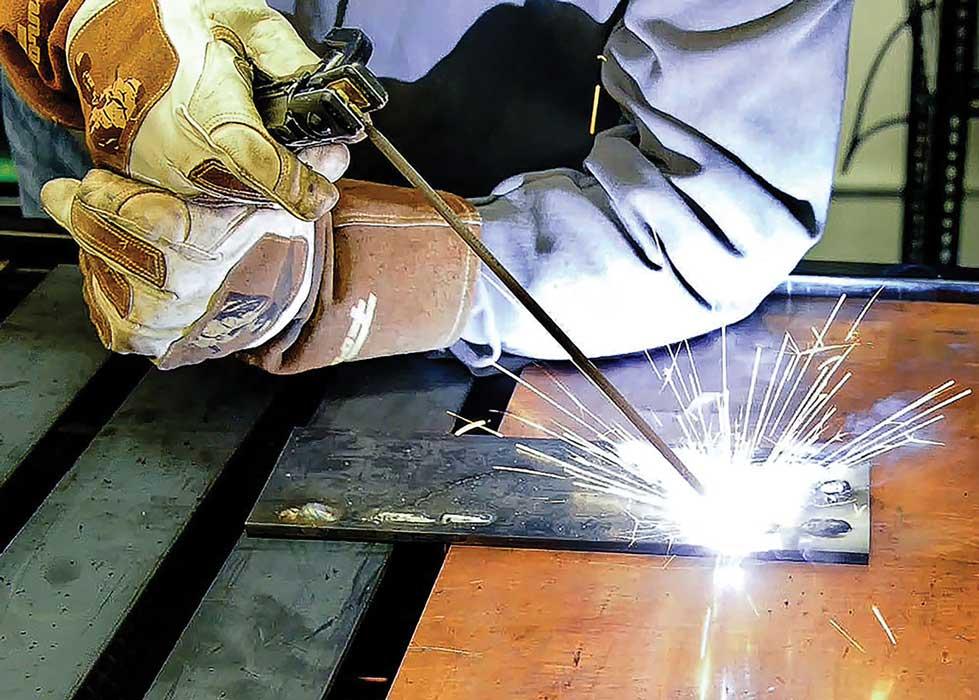Advanced Welding WPS: Customizing Specs for Complicated Projects
Advanced Welding WPS: Customizing Specs for Complicated Projects
Blog Article
Getting Welding Quality: Introducing the Keys of WPS Application and Optimization
In the realm of welding, achieving quality is a search that depends upon the meticulous implementation and optimization of Welding Treatment Specifications (WPS) These foundational files work as the foundation of welding procedures, dictating the parameters and procedures needed for creating top notch welds regularly. However, the secrets to opening the complete possibility of WPS lie not only in comprehending its value but likewise in understanding the complexities of its implementation and optimization. By diving right into the vital elements, approaches, obstacles, and best techniques connected with WPS, a world of welding quality awaits those that agree to discover its depths.
Significance of WPS in Welding
The Value of Welding Procedure Specifications (WPS) in the welding sector can not be overstated, acting as the backbone for guaranteeing uniformity, high quality, and security in welding procedures. A WPS gives detailed directions on exactly how welding is to be performed, including vital variables such as products, welding procedures, joint design, filler steels, interpass and preheat temperature levels, welding currents, voltages, traveling rates, and a lot more. By sticking to a well-defined WPS, welders can maintain uniformity in their job, causing consistent weld high quality throughout different jobs.

Crucial Element of WPS
Talking about the integral elements of a welding treatment requirements (WPS) is essential for comprehending its role in welding procedures. One essential element of a WPS is the welding process requirements, which details the certain welding processes to be used, such as gas tungsten arc welding (GTAW) or shielded steel arc welding (SMAW) By integrating these crucial aspects right into the WPS, welding treatments can be standard, ensuring high quality, effectiveness, and safety and security in welding procedures.
Approaches for WPS Optimization

Second of all, training and credentials of welding workers according to the particular needs of the WPS is critical. Offering thorough training programs and making sure that welders are accredited to perform treatments detailed in the WPS can result in greater top quality welds and decreased rework.
Furthermore, leveraging modern technology such as welding software application and surveillance systems can aid in optimizing WPS. These tools can help in monitoring variables, making certain criteria are within defined limitations, and giving real-time responses to welders, enabling them to make immediate modifications for enhanced weld top quality.
Common Challenges and Solutions
Facing obstacles in implementing the strategies for WPS optimization can prevent welding operations' efficiency and top quality. One usual challenge is inadequate training or understanding of the welding procedure requirements (WPS) amongst the welding group. This can bring about inappropriate implementation of welds, resulting in issues and rework. To address this, detailed training programs ought to be executed to guarantee that all welders are efficient in analyzing and using WPS accurately.
An additional obstacle is the absence of appropriate documentation and record-keeping, which is important for WPS optimization. Without clear records of welding parameters, products utilized, and inspection results, it becomes difficult to determine locations for renovation and make sure consistency in welding procedures. Applying a durable documents system, such as electronic welding administration software, can aid enhance record-keeping and facilitate information evaluation for constant enhancement.
Furthermore, inconsistent welding equipment calibration and maintenance can pose a significant obstacle to WPS optimization. Normal equipment checks, calibration, and upkeep routines should be followed strictly to guarantee that welding specifications are precisely regulated and preserved within the defined resistances (welding WPS). By addressing these common difficulties with positive options, welding operations can improve efficiency, high quality, and overall welding excellence
Best Practices for WPS Application
To ensure successful WPS application in welding procedures, adherence to sector standards and careful attention to detail are vital. When initiating WPS implementation, it is crucial to start by thoroughly comprehending the specific welding demands of the project. This requires a comprehensive testimonial of the welding treatment specs, materials to be welded, and the ecological conditions in which the welding will certainly take area.
Once the requirements are clear, the next action is to select the ideal welding treatment that lines up with these requirements. This entails speaking with the relevant codes and requirements, such as those provided by the American Welding Culture (AWS) or the International Company for Standardization (ISO), to ensure compliance and high quality.
Moreover, recording the entire WPS implementation process is important for traceability and high quality control. Comprehensive records ought to be kept concerning welding parameters, product prep work, interpass and preheat temperature levels, welding consumables made use of, and any kind of discrepancies from the original procedure. Regular audits and reviews site of the WPS website here can help identify locations for renovation and ensure ongoing optimization of the welding process.


Final Thought
To conclude, the implementation and optimization of Welding Procedure Requirements (WPS) is essential for attaining welding quality. By understanding the key aspects of WPS, implementing effective approaches for optimization, dealing with typical obstacles, and adhering to best practices, welders can make sure top quality welds and risk-free working problems. It is important for specialists in the welding industry to click for more info focus on the correct implementation of WPS to enhance overall welding efficiency and attain desired outcomes.
The Significance of Welding Treatment Specifications (WPS) in the welding industry can not be overstated, serving as the backbone for making sure uniformity, quality, and security in welding procedures. A WPS provides in-depth directions on just how welding is to be lugged out, consisting of essential variables such as products, welding procedures, joint design, filler steels, preheat and interpass temperatures, welding currents, voltages, travel rates, and extra. One essential element of a WPS is the welding procedure requirements, which details the details welding procedures to be made use of, such as gas tungsten arc welding (GTAW) or shielded steel arc welding (SMAW) By including these vital elements into the WPS, welding treatments can be standard, guaranteeing top quality, efficiency, and safety in welding operations.
It is critical for experts in the welding industry to focus on the correct implementation of WPS to improve general welding performance and achieve desired end results.
Report this page